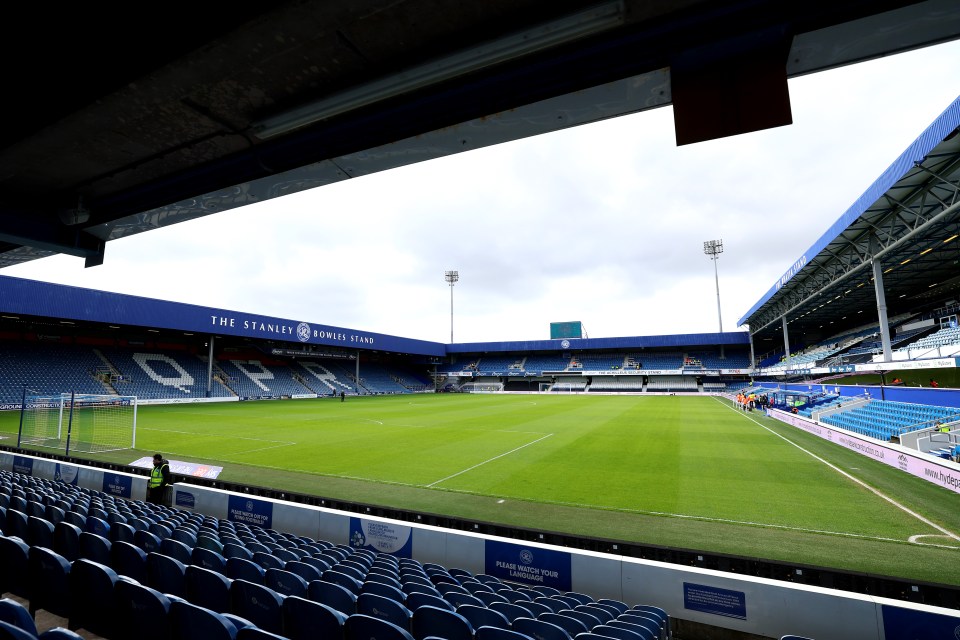Queens Park Rangers have been flirting with the idea of upgrading their stadium for over a decade, and redevelopment could be on the cards.
But just three years ago, the west London club were at risk of having to leave their borough of Hammersmith and Fulham after struggling to move next to one of the most well-known prisons in the country.
QPR have had multiple plans to leave Loftus RoadGETTY
QPR have been playing in the Championship since their Premier League relegation in 2015, and were in a relegation battle in the second tier last term.
The Hoops want to get back to their top flight days, and as part of their strategy, their owners want to improve Loftus Road.
That’s despite it recently being selected as England’s best stadium by talkSPORT very own Adrian Durham after he completed the 92 challenge.
Located in Shepherd’s Bush, the stadium has been home to The Hoops since 1917 with the current capacity standing at 18,439.
Although it’s not the smallest in the league thanks to Oxford United’s Kassam Stadium and Luton Town’ Kenilworth Road, that number would be quickly dwarfed, and was so previously, in the Premier League.
In 2013, in the years of Harry Redknapp, reports stated the Hoops were set to move to a new 40,000-seat stadium – New Queens Park – as part of a major regeneration project in the Old Oak area in west London, two-and-a-half miles north of their current home.
Ex-QPR chairman Tony Fernandes, who served from 2011 to 2018 as well as being majority shareholder, told QPR’s website at the time: “Loftus Road is – and always will be – a special place for the club and our supporters, but we need more than an 18,000 capacity.
“With no option of expanding here, we have to look elsewhere and we welcome the mayor’s and Hammersmith & Fulham council’s commitment to regenerate the area, which includes an option to develop a new stadium at Old Oak as a key catalyst to bring forward redevelopment, cementing our future in this part of West London.
“Not only will this give us a top quality stadium to cater for QPR’s needs as the club progresses and grows over the years ahead, but we are very excited about being the driving force behind creating one of the best new urban places in the world. This will be the catalyst for the regeneration of a forgotten area.”
QPR were relegated from the Premier League that season, and plans for the Old Oak redevelopment, put into motion by the pending arrival of train line High Speed 2, were placed on pause.
QPR could have played in a ground like thisQpr
Their new ground would’ve been at the centre of major modernisationQPR
As the club entered their current spell in the Championship, a move to the soon-to-be redeveloped Linford Christie Stadium (LCS) was mooted.
Thames Valley Harriers and youth football team Kensington Dragons’ home, situated next to HMP Wormwood Scrubs, was reported to even include a lido to go alongside new changing rooms, sports pitches and a new athletics track as part of the upgrades.
However, in 2018 QPR said that if they could not build a new ground at the LCS they would be forced to look outside the borough to ensure a long-term home.
In 2019, QPR warned that the club needed the local council’s help to redevelop Linford Christie Stadium, with the land owned by Hammersmith & Fulham Council and other stakeholders involved.
“If the council do not want QPR to be involved in its redevelopment then that is their choice,” chief executive Lee Hoos told the club website at the time.
“But we have to be honest with people about the likely consequence of that, which is that QPR’s medium to long-term future will be out of Hammersmith & Fulham.”
Hoos said any proposed redevelopment of Loftus Road was a ‘non-starter’ because of the lack of available land around the stadium due to it being packed into a residental area.
However, Hammersmith & Fulham Council accused QPR’s owners of ‘engaging in property speculation’ and lobbying to turn Loftus Road into housing. These are claims the club later denied.
The upgrades to the LCS have not been made at the time of writing.
Instead, recent reports from Mail Sport state QPR chiefs are seeking new investors with funds to build a state-of-the-art stadium to replace Loftus Road.
QPR want to bring the good times back with an improved stadiumGETTY
The pitch, dubbed ‘Project Big Ben’, was sent to potential buyers this year, and plenty of emphasis was placed on QPR being in London.
They valued the ground alone between £50m and £64m.
QPR’s current owners are Malaysian businessman Ruben Gnanalingam, who owns 60 per cent, British investment manager Amit Bhatia who owns just under 20 per cent and American businessman Richard Reilly who holds a 21 per cent stake.
All of them want to stay at the club, according to the story published in March, but are looking to broaden both their war chest and their skills.
Montminy say QPR’s vision is to ‘produce a state-of-the-art, multi-purpose stadium, as part of a major regeneration in west London.’
He also says ‘discussions are underway to further explore significant stadium development with local municipal authority.’
QPR did not give comment to Mail Sport at the time.
For now, the west London club are staying put in their current home, and sit third from bottom in the Championship at the time of writing.
Marti Cifuentes’ side have won just one game in the league this season, drawing four and losing four too.


